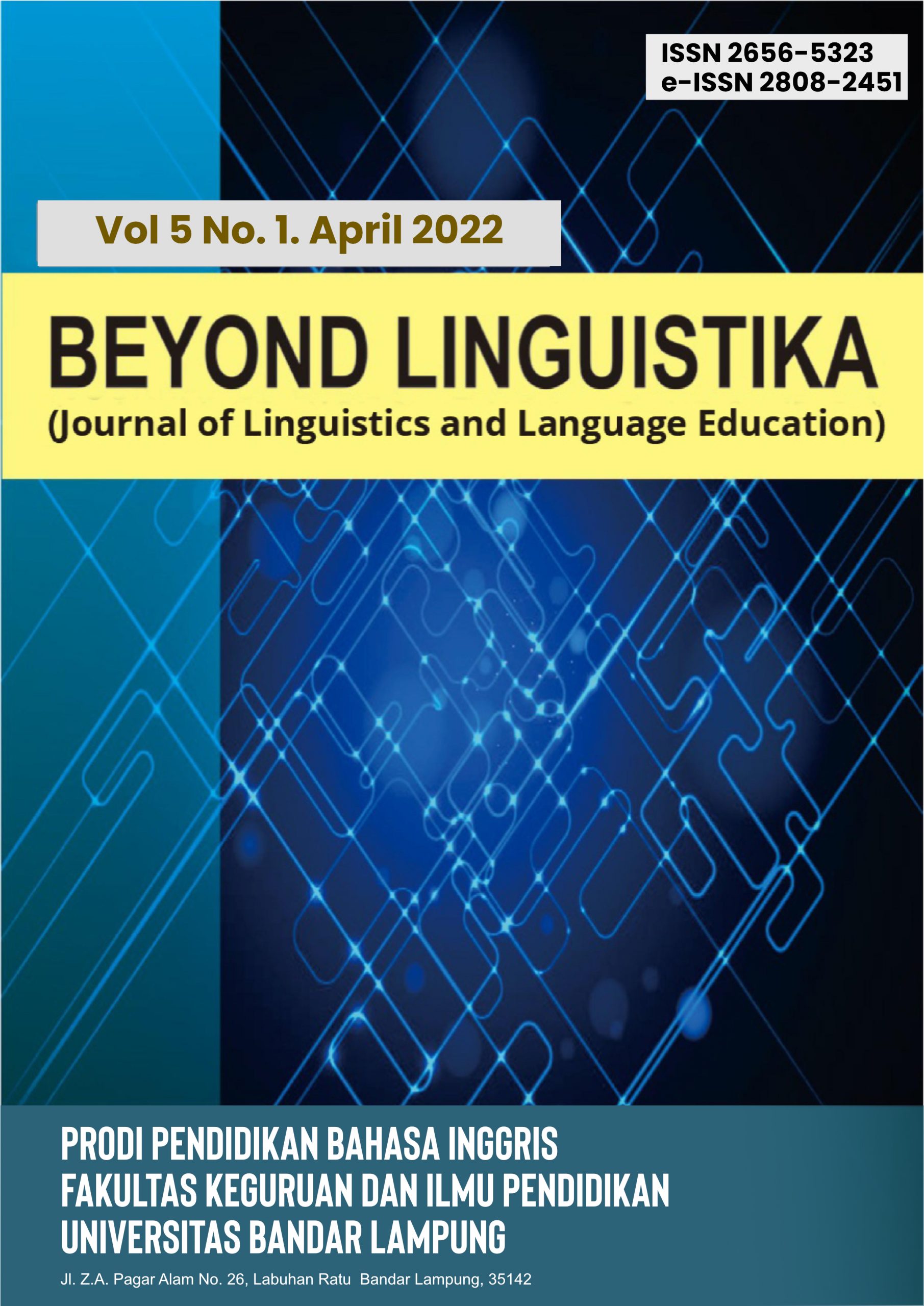THE CORRELATION BETWEEN MORPHOLOGICAL AWARENESS AND VOCABULARY MASTERY
Abstract
The primary aim of this research endeavour was to investigate the influence of students' language attitudes on their proficiency in acquiring the English language. The primary aim of this study is to investigate the influence of students' attitudes on their language acquisition and to analyse the importance of various mindsets throughout the process of learning. The current study utilises a blend of qualitative research methods to evaluate data obtained from a cohort of 16 students in their seventh semester at FKIP, Universitas Bandar Lampung. The main aim of this study was to collect data on students' perspectives regarding the study of English as a Foreign Language (EFL), employing questionnaires and interviews as the principal research tools. The research findings unveiled a significant association between students' favourable sentiments towards the English language and their comprehensive academic achievement in the discipline. The study highlights three separate components of attitudes, specifically cognitive, affective, and behavioural, that exert a substantial impact on academic performance. The results suggest that students' attitudes towards language acquisition significantly influence their overall academic performance. Furthermore, the study uncovered that the linguistic attitudes of students exerted a significant impact on their proficiency in acquiring the English language. The significance of understanding students' attitudes towards the study of foreign languages is emphasised in order to improve educational results and academic accomplishments. The findings of this study have the potential to offer significant contributions to educators in the development of English-learning curricula that promote student engagement and excitement.
Keywords
Full Text:
PDFReferences
Abidin et al. (2012) Abidin, M. J. Z., Pour-Mohammadi, M., & Creswell, 2012 J.W. Creswell Educational research: Planning, conducting, and evaluating quantitative and qualitative research (4th ed.), NJ: Pearson Education., Upper Saddle River (2012)
Arikunto. (2006). Prosedur Penelitian Suatu Pendekatan Praktek. Jakarta : PT. Rineka Cipta.
Barman, C. and Barman, R. (2009). Resist to the end. https://doi.org/10.5790/hongkong/9789622099760.001.0001
Creswell, J. W. (2014). Qualitative, quantitative and mixed methods approaches
Creswell, J. W. (2012). Educational research: Planning, conducting, and evaluating quantitative and qualitative research (4th ed.). Boston, MA: Pearson.
Efendi, M. S. (2012). Linguistik Sebagai Ilmu Bahasa. Jurnal Perspektif Pendidikan, 5(1), 97-101.
Eshghinejad, S. (2016). RETRACTED ARTICLE: EFL students’ attitudes toward learning English language: The case study of Kashan University students. Cogent education, 3(1), 1236434.
Gardner (2011
Hanafiah, R., & Siregar, S. I. (2016). Children’s Language Attitude Toward English in Sunday School Viewed From Social Class.
Heriyanto, 2018
Latief, M. A. (2015). Research Method on Language Learning: An Introduction. Malang: Universitas Negeri Malang.
Latief Ribo & Dubravac, 2021;
Marlina, L. (2013). Learning English as foreign language in Indonesia through English children’s literature. The International Journal of Literacies, 19(4), 41-51.
Muyassaroh, A. R. and Prasetyo, I. (2019). Labelling basic emotion developing emotions in early childhood. Proceedings of the International Conference on Special and Inclusive Education (ICSIE 2018). https://doi.org/10.2991/icsie-18.2019.55
Rahman, M.S. (2017). The Advantages and Disadvantages of Using Qualitative and Quantitative Approaches and Methods in Language “Testing and Assessment” Research: A Literature Review. Journal of Education and Learning, 6(1), 102-112. http://dx.doi.org/10.5539/jel.v6n1p102
Roopa, S., & Rani, M. S. (2012). Questionnaire designing for a survey. Journal of Indian Orthodontic Society, 46(4_suppl1), 273-277.
Shahrzad, H., Hodjat, B., & Miikkulainen, R. (2016). Estimating the advantage of age-layering in evolutionary algorithms. Proceedings of the Genetic and Evolutionary Computation Conference 2016. https://doi.org/10.1145/2908812.2908911
Sugiyono. (2019). Metode Penelitian Kualitatif. Bandung: Alfabeta
Souza, 2021) P.sauza, Carolina. (2021) An Introduction to Qualitative Methods for Future studies. Escola De
Zhan (2013) Jin, H., Zhan, L., & Anderson, C. W. (2013). Developing a fine-grained learning progression framework for carbon-transforming processes. International Journal of Science Education, 35(10), 1663-1697.
Zuniarti, I., Yuniasih, I., Martana, I. K., Setyaningsih, E. D., Susilowati, I. H., Pramularso, E. Y., … & Astuti, D. (2021). The effect of the presence of e-commerce on consumer purchasing decisions. International Journal of Data and Network Science, 479-484. https://doi.org/10.5267/j.ijdns.2021.3.005
DOI: http://dx.doi.org/10.36448/bl.v6i1.3346
Refbacks
- There are currently no refbacks.















